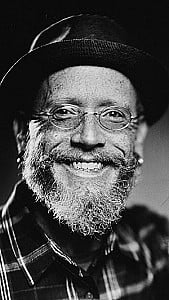All About Extraordinary Egyptians
Description
Vocal Characteristics
Language
EnglishVoice Age
Middle Aged (35-54)Accents
North American (General) North American (US General American - GenAM) North American (US West Coast - California, Portland) North American (US Western)Transcript
Note: Transcripts are generated using speech recognition software and may contain errors.
Chapter 10. Howard Carter discovers Tutankhamen. Howard Carter was an Englishman and archaeologist who had been working in Egypt for 31 years. He was convinced that there was one more tomb that had not been discovered. He had been searching for the tomb of Tutankhamen for five years, using the money of a wealthy Englishmen called Lord Carnival. With so much money already spent, Lord Carnarvon almost gave up hope of finding the tomb. But Howard Carter persuaded him to fund his work. For one more year. Carter had made a plan of the Valley of the Kings, convinced by the things already found that the tomb of Tutankhamen was definitely there. He reexamined these plans and noted that one place that had not been investigated was the pile of previously excavated Earth from other digs searching through these mounds of earth. Howard Carter's workmen found mud huts that had been left when building the tomb of Ramsey's The sixth, Howard Carter and his men began to dig away the ground underneath Um, on the morning of November 4th, 1922 a water boy put down his water jars and hit his foot against Iraq. The sand was scraped away to reveal that the rock was in fact, a step with excitement. The workers cleared away more and more sand, revealing, Ah, whole flight of steps. Howard Carter kept a diary, and so we were able to read about the events that followed and share the excitement of the workers. At the bottom of the steps. They found a door which had a stamp embedded within it. Without doubt, Howard Carter knew that this was a sign that below the door, someone of great importance was buried. Howard Carter was certain that it had never been disturbed, but in spite of his excitement, decided to wait for the arrival of Lord Carnival before opening the door. They covered the door with sand toe hide it. A telegram was sent no texts in those days, and it took three weeks before Lord Carnival and his daughter arrived with excitement. The workmen again scraped away the sand, and the door was completely revealed. Only now, on closer examination, did they discover that one of the seals have been broken and then resealed. The door was removed and a passageway filled with rubble was revealed. Howard Carter was so disappointed because he realized that the tomb robbers had cut a way through the passageway. He now thought the burial chamber would be empty. While excavating the tomb, a tablet was found with a curse written upon it. Howard Carter hid this tablet so that his workers would not know about it. He knew it was just something written to keep grave robbers away, but did not want his men to be frightened with heavy hearts. The workers cleared away the rubble from the passageway until they came to another door, which had also been disturbed. In his diary, Howard Carter writes about how he made a tiny hole in the door with trembling hands. A candle was passed through the tiny hole, and as their eyes gradually adjusted to the light, they saw for the first time the wonderful treasures that the tomb still held. The hole was made bigger so that they could squeeze into the small room. Once in, they found themselves surrounded with all the household treasures that Tutankhamen would need to travel safely through the underworld to the afterlife. As they explored, they found more and more rooms filled with amazing treasures fashioned from gold. Howard Carter, believed he had discovered the most beautiful things ever to be found in Egypt. The tomb contains several chambers, which included a burial chamber, anti chamber treasure chamber and annex.
Tags
Buddy, Family Man, Father, Host/Interviewer, Instructor, Amusing, Conversational, Endearing, Friendly, Heroic, Inspirational, Professional, Upbeat, Warm, Approachable, North American (General), North American (US General American - GenAM), North American (US West Coast - California, Portland), North American (US Western)
